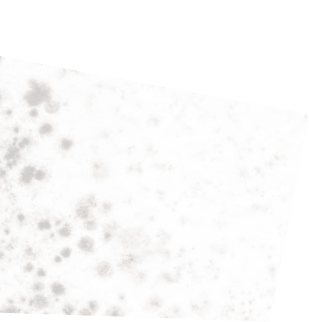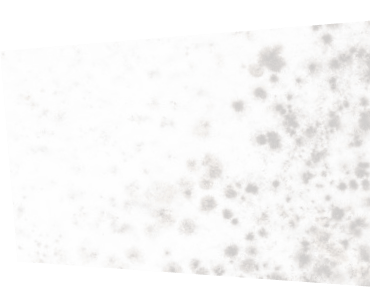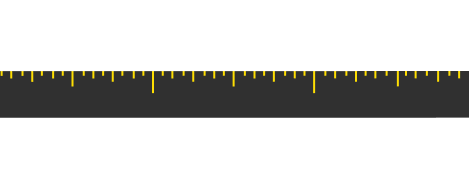Mold is a universal problem, affecting most homes at some point in time. Homeowners are often unaware that even if you cannot see visible mold growth, it could still be growing in hard to reach places, such as basements, attics, below floors or behind walls. If you suspect mold is growing in your home, or if you see visible mold growth, many people’s first instinct is to try to remove the mold themselves. However, mold is notoriously difficult to remove. Even when you think you’ve finally removed all the mold, it is still likely to return. In this blog post, we want to address the truth behind at-home mold removal, and the best way to remove mold contamination in your home. In order to protect the health of your family and the structural integrity of your home, it is essential that you both identify mold and remove it efficiently. Here we will discuss some of the myths related to cleaning mold with bleach, and suggest ways to access professional help when it comes to ensuring you are breathing the best quality air.
Does bleach water kill black mold?
For many years, homeowners have used bleach or a diluted bleach solution as a household cleaner. In general, bleach can be highly effective for treating nonporous surfaces such as counters and tile flooring. However, bleach is not effective at fully eradicating mold, especially if it is growing on a porous surface such as wood or drywall. Unfortunately, this is also true when it comes to removing black mold. Bleach is not able to effectively kill mold and can make its growth worse for two reasons. First, bleach contains water, which is required for mold growth, and can help promote its development on porous surfaces. The second point is that bleach may kill mold itself but is unable to kill mold spores, especially if they are airborne, allowing the mold contamination to continue to spread throughout the house. Thus, bleach is usually only effective at removing surface mold for a short amount of time. If you want to eliminate mold growth, especially on porous materials, you will require more advanced detergents and cleaning products.
How long does it take for bleach to kill mold?
Although we have described the limits of bleach for cleaning mold, it is possible to use bleach as a regular household cleaner on nonporous surfaces to prevent the growth of mold, bacteria or other microbes. Other effective household cleaners include vinegar, borax, baking soda and detergents. In general, we suggest diluting bleach 1 in 6 (to create a 1% solution) and spraying it on nonporous surfaces such as counters. Then, allow the solution to remain on the surface for approximately ten minutes in order to ensure that any microbes are killed. Next, wipe down the surface with water in order to remove any remaining bleach. As bleach can be toxic to children and pets if consumed, and traces of bleach can remove the colour from clothing and other items, it is important to thoroughly rinse surfaces and allow them to dry as part of your regular cleaning routine. If you are using bleach to clean up mold contamination, first make sure the mold is growing on a nonporous surface such as counters or tiles. Next, using a cloth dampened with a diluted bleach solution, scrub away the visible mold growth. Then, use a fresh cloth with additional bleach to thoroughly disinfect the area where the mold is growing. Rinse the surface and repeat as necessary. It is important that you continue to monitor the area where mold was growing as there is always a risk of the mold returning, especially if your home is moist and warm, facilitating further growth.
What mold is the most dangerous?
The health hazards of mold vary significantly depending on who is breathing the contaminated air. In general, several kinds of mold can grow in a home, and every species can pose a health hazard, especially if young children, elderly individuals or immunocompromised people are living near the contamination. Scientists, physicians and contractors agree that some of the most dangerous household molds are black mold and other toxic molds. What sets these molds apart from others is that they produce toxic spores and inhalation of these toxic spores can settle in internal organs and the bloodstream, which is associated with dangerous symptoms and serious disease. This includes, but is not limited to, respiratory issues, chest pain, eye irritation, chronic fatigue, central nervous system issues, aches and pains, and, if left untreated, organ failure. Often the symptoms are misinterpreted as a bad cold or flu, but as the symptoms continue to persist and worsen, it is ultimately identified that it is due to toxic mold exposure. If you suspect toxic mold is growing in your home, it is important to seek professional help to identify the source of the growth and effectively remove the contamination.
Is yellow mold dangerous?
There are several types of mold that are yellow. This includes more harmless household molds that can be cleaned by hand, and it includes species of toxic mold such as Mucor that cause a deadly fungal infection. This is where professional help can assist you in identifying and removing the toxic mold before negative symptoms and health effects can occur.
Mold growing in your home can start as a nuisance or eyesore, and quickly develop into a health hazard that affects the structural integrity of your home. Especially in the warm and moist summer months, mold can take hold and thrive within dark and damp corners of your home. Thankfully, the professional team of experts at Inch by Inch Inspections can help you identify and eliminate any mold contamination. With a location in Vaughan, Inch by Inch Inspections is experienced in servicing Greater Toronto Area homes, helping to identify and remove mold in even the toughest to reach corners of homes. If you are concerned about mold growing in your home, or aren’t sure where to begin, contact our friendly team of experts at 416-826-7172 to get started today. We can help identify where mold is growing in your home and offer permanent solutions to ensure the contamination never returns.




